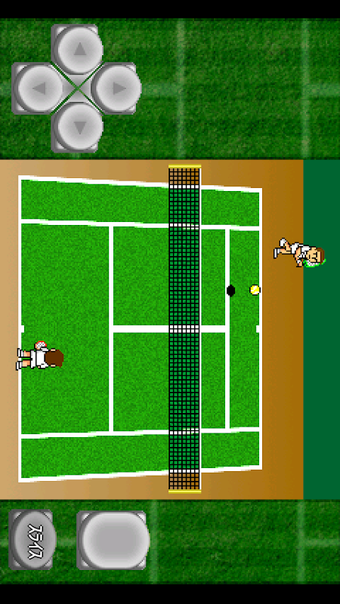Free tennis game
Screenshots
Gachinko TennisJ is a free tennis game by developer MocoGame. This game is a welcome sight for those tired of over-represented sports, such as football on Android devices, with titles like Dream League Soccer 2018 or FIFA Soccer. Moreover, there are hardly any tennis titles for Android, and one of the closest things you can find is Badminton League.
This game is also quite unique in several ways. Its pixel-style retro graphics, interesting power-ups and player progression make it an excellent choice for both fans of tennis and retro JRPGs. What’s more, you can even play the sequel with the same app.
Tennis in a JRPG style
This isn’t a typical sports game where you have realistic simulations of ball trajectories, precise court conditions and weather. Instead, you have different skills that your character can develop, including supersonic serves.
As you win, you earn experience points, which you can use to improve your tennis techniques to defeat an ultimate boss-like opponent. Of course, because it’s a Japanese game, you’ll need to understand Japanese to know what’s going on. However, there’s an English version, too.
Light on the technical side
Because Gachinko TennisJ is a fantasy game more than anything, you shouldn’t expect realistic moves and actions. Even then, there are some problems the developers acknowledge. One is the ball trajectory, which was improved in the sequel.
Another issue is that many classic tennis shots, such as lobs, drops, smashes, and slices, are only available in the sequel. It’s as though the developers left this iteration “as is” and focused on the second instalment.
Work in progress
Gachinko TennisJ is an interesting little title to spend your time maxing out your character. Its mixture of tennis and JRPG are very enticing for fans of both genres and, in that sense, it does its job very well. You really feel you’re improving your character as you earn experience.
Anyone looking for a realistic tennis simulation would be better off looking elsewhere. Its basic graphics, simple controls and unrealistic ball trajectory leave much room for improvement. While many of these issues were worked upon for the sequel, it’s anyone’s guess why they didn’t implement such solutions in the original.


